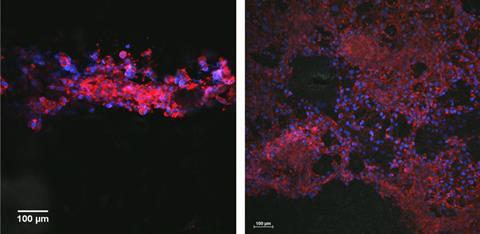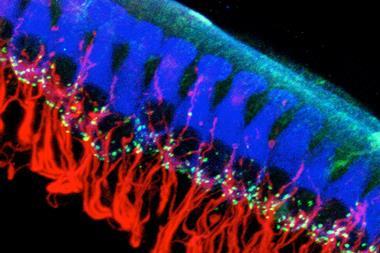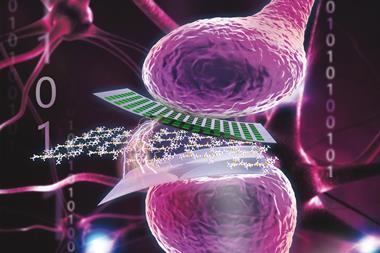
A tube-like structure printed with a specially designed ink can repair broken neural circuits in vitro, new research shows. The conduit could be developed into a treatment to boost sensory and motor recovery in patients with nerve injuries.
Nerve damage can interrupt the communication network between cells in the nervous system. Nerves can grow new cells to close small gaps and reestablish connections. However, in larger lesions, restoring the network is more complicated.
Shadi Houshyar, who co-led the work at RMIT University in Australia, says that if the gap between nerves is too large, there’s a lot of tension and breakage, so attaching the nerves together is challenging and sometimes impossible. ‘That’s why they have to use something in the middle, like an allograft or a nerve guide,’ she adds.
While allografts could assist with guiding nerve cells into growing in the right direction, they often fail because it’s challenging to mimic the structure and functionality of nerve tissue. This limits functional and sensory recovery. Houshyar’s research aims to make a more effective guide to facilitate neuron migration with a creative approach – they guide and encourage nerve regrowth with a special ink.
Houshyar says the ink has two main components. Dopamine, which encourages nerve cells to grow and differentiate, and carbon nanofibers for conductivity. These fibers use the body’s own electrical signals and assist with directing the nerves in the right direction – a crucial step to maintaining sensory and motor functions in nerve regeneration. The team tested the ink and saw that neurons were growing and migrating in the right direction.
‘The preliminary result shows that the nerve grows, and a lot of studies and literature reviews show that nerve cells follow electrical signals,’ Houshyar says. After mixing all materials with a solvent and making the ink, the team printed it on the surface of a biodegradable nerve conduit. Future tests will involve wrapping the conduit between two injured nerves. ‘At the moment we tested human cells in the lab, and we got really good results,’ she adds. ‘We’re optimistic because [the nerve conduits] are all compatible with the body. The next stage would be using a really small animal, and, if it works, we can optimise that.’
Sandra Van Vlierberghe, a biomaterials expert at Ghent University in Belgium, highlights how the ink combines biodegradability and conductivity in a single material. ‘The concept of creating biodegradable electrically conductive materials is very interesting,’ she adds. ‘The issue with [most] conductive polymers is that they are not biodegradable. And ideally, when targeting tissue engineering, you want to have a biomaterial that can degrade.’ Vlierberghe says combining carbon nanofibers into the polymer was a good strategy to achieve conductivity, but it could be complicated to regulate. ’In the end, this is a new chemical entity, which implies some regulatory hurdles and huge investment to test this in humans.’
References
This article is open access
S Houshyar et al, RSC Adv., 2020, 10, 40351 (DOI: 10.1039/d0ra06556k)












No comments yet